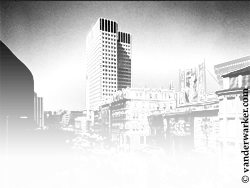Moments: Photographs and Images |
 |
| A picture is worth a thousand words, and in the Boston Streets Collection
the images offered are worth nearly 100 years as well. Ranging from
some of the earliest urban photography in the country to timely images
of urban renewal, the two image collections (The Bostonian Society's
Boston Streets and DCA's South Cove) combine to enrich and illustrate
the everyday and monumental events that shaped Bostonian's lives, from
the creation of the land itself though landfill to the destruction of
whole neighborhoods and the new buidings and people that replaced them
in the constant cycle of renewal and reuse that is the modern American
city.
Cataloging the images, Documenting places The images were cataloged between 2000 and 2004 as part of the regular work of the DCA and TBS. Levels of descriptive cataloging reflect the different missions of the two insitutions. TBS images are used by researchers the world over for a variety of research interests, genealogical, architechtural, urban develpment, built environment, etc. Therefore, TBS catalogers did extensive research on the buildings, tenants, and locations depicted in the images. The DCA images documented the development of the Tufts health sciences campus in downtown Boston, and the cataloging interest was both more specialized and less detailed. DCA catalogers tended to focus on the Tufts connection of the buildings and people in the images. Nevertheless, what unites the descriptions is the documentation of place. This connection of images to a specific point on the earth is what unites not only the images in the two collections, but connects them with the city directories and the history of the city that is contained in them. These images become illustrations to the directories, giving a tangible and real feeling to the lists of names and places. At the same time it also allows the directories to furnish extra information about the images that is beyond the practical scope of any image cataloging research. In this way, both resources are enhanced. |
 |

|